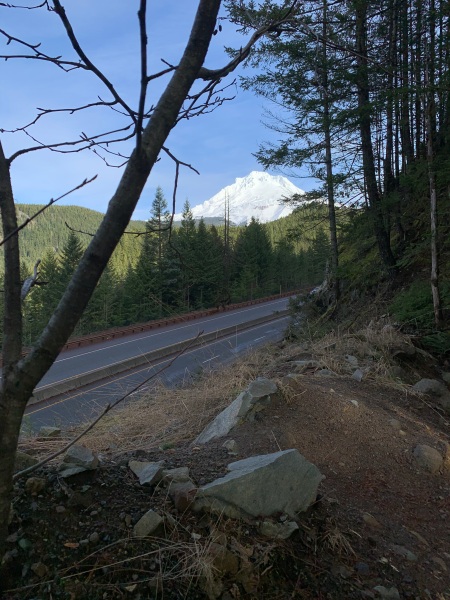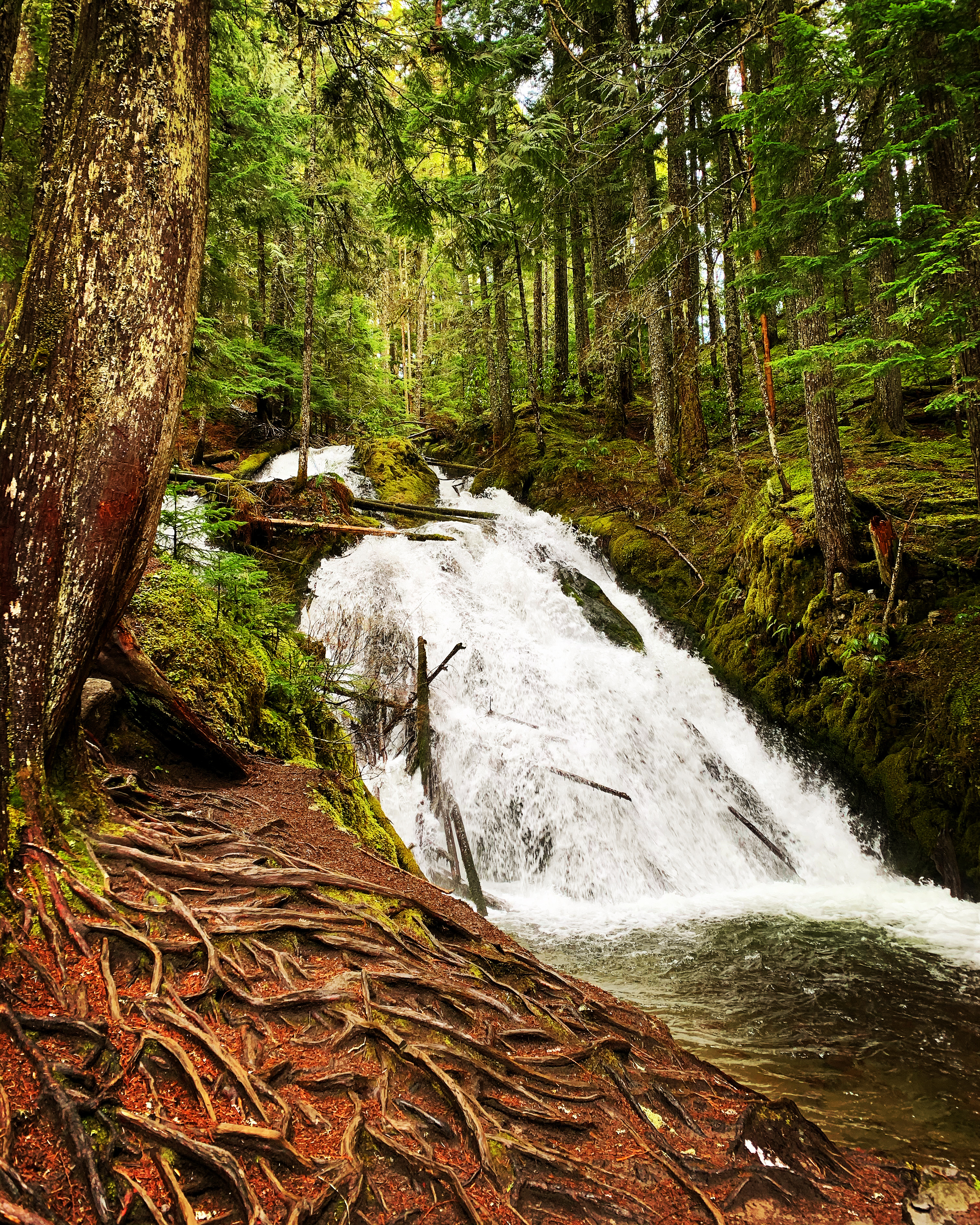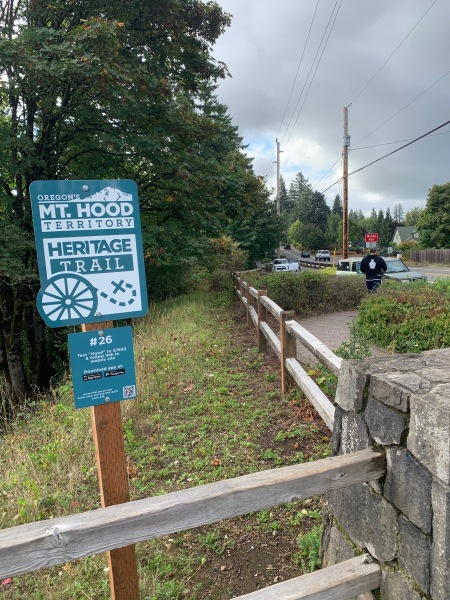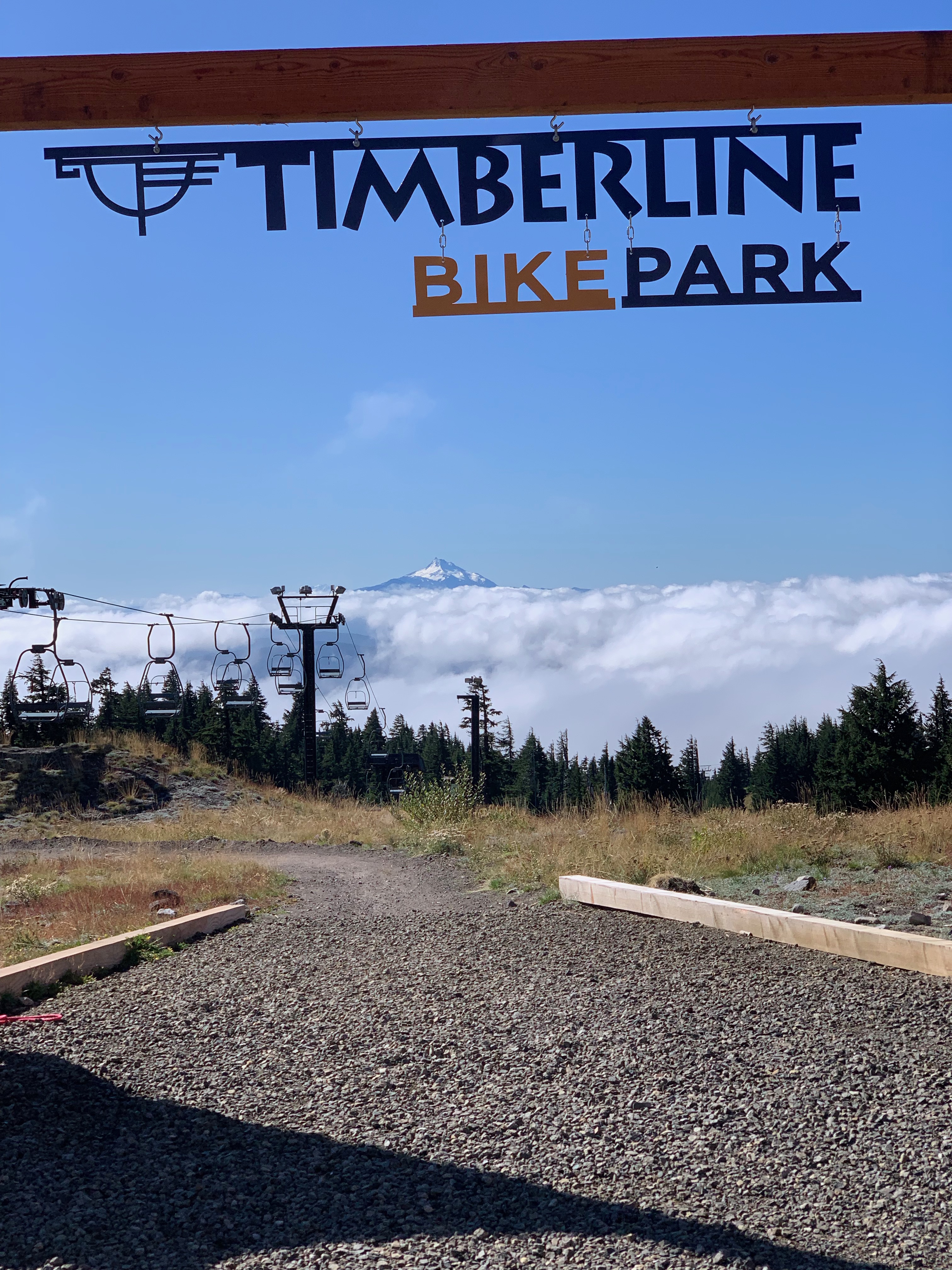With the arrival of COVID-19, Together Anywhere is asking, what can we learn from history regarding the transience of our humanity and the way we move about space? What are the benefits of our travel? What are the consequences? How might these answers inform us of where we need to go next? In our last post, we explored the beginnings of the Oregon Trail and the century leading up to the the age of the automobile. This is where our next story begins.

After the state purchased the Barlow Road in 1919, the Oregon Highway Commission and the federal government worked for five years on expansion. It opened to traffic as a two way road on June 21, 1925 after the last snow cleared. Barlow’s and Wemme’s road was officially Highway 26. And the series of roads, from Portland, down Highway 26, and up Highway 35 to Hood River, became known as the Mount Hood Loop Highway.
Travelers who once spent days to get to the mountain could now complete the journey in just a few hours. Highway 26 was now plowed in the winter, no longer just a place for summer recreation with year round accessibility.
During the 1930s, the CCC built more campgrounds in the Mount Hood National Forest to handle the increased use of the area for recreation and tourism. Then, in 1942, the United States entered World War II. Visitation numbers plummeted and the developing areas became stalled and were already deteriorating by the time the war ended in 1945. Timberline and the small villages struggled to regain momentum. People were still visiting the mountain for recreation but now, because of quick access and improved roads, city dwellers could make the journey to the mountain and back without the need for overnight accommodations. Just ten years after the war, Timberline Lodge was closed and Government Camp had only one small motel.
During those difficult post-war years, major highway construction was underway to expand the highway and straighten it, allowing for even faster travel between Portland and Central Oregon. The highway was relocated away from places like Laurel Hill and allowed the traveler to avoid slowing down through the center of small villages like Government Camp, now bypassing the community completely. Ski recreation with Bend’s Mount Bachelor and Mount Hood Meadows in the 1950s and 60s increased competition for recreation dollars. The highway development and increased facilities meant more consumer access but indicated a possible economic death for the smaller communities. These years threatened the economic future of the Mount Hood area.

Combined with the economic struggles, lax environmental laws, logging, and increased vehicle traffic were also threatening the ecological future of Mount Hood.
The post-war years increased the demand for lumber as more Americans were building houses. And the government needed money. Eyes turned toward the public forests of Oregon knowing its worth as a commodity. What’s a national forest needing money to do? The answer: it’s complicated.
As we know from recent media, the rule book for public lands is still being written. If you recall, individuals and families first came to Oregon in search of the free land they could claim. With people quickly gobbling up the land out West, the Forest Reserve Act of 1891 was created so that portions of public domain lands could remain in the ownership of the federal government with a primary goal of conserving the forests and watershed. The Bull Run Forest Reserve, now located within the boundaries of the Mount Hood National Forest, was the first protected land in Oregon, established in 1892. Most Portlanders will recognize the name Bull Run as it is the source of their drinking water. In 1908, that reserve merged with the Cascade National Forest to become the 1.8 million acre Oregon National Forest. While portions were transferred to the Willamette National Forest in 1911, just over 1 million acres remained and officially became known as the Mount Hood National Forest in 1924.

When the national park system was established in 1916, many were interested in a potential Mount Hood National Park that would highlight the beauty of Mount Hood and the nearby Columbia River Gorge. This idea has been revitalized at many points in the last century, and, in the post-war era, a national park status may have saved this area from years of struggle.
In the 1950s, under the Forest Service direction, the old-growth forests on public land were able to be sold to the highest bidder. This turning point in Oregon history began the expansion of thousands of miles of forest roads and began the decades long battle for logging rights. Today, Oregon has over 70,000 miles of forest roads, more than any other state in the nation and nearly three times more than California, the state with the second highest amount. It is estimated that over 150,000 acres of land, or 15%, of the Mount Hood National Forest has been changed by logging practices often under the guise as a solution to fire management and forest restoration. At the height of the industry in 1977, over 500 million board feet of wood were produced in Mount Hood National Forest. That, my friends, is enough wood to build 40 thousand 2,000 square foot houses! And that was in just one year. And in just one forest.

Many organizations and environmental laws enacted during the 60s, 70s, and 80s changed the practices of the Forest Service and the future of the logging industry forever. By 1990, only 25 million boards were produced, down over 90% from the peak of production. Logging practices on Mount Hood today are closely monitored by non-profit conservation organizations like Bark, Oregon Wild, and Cascadia Wildlands.
Organizations and citizens have played a major role in the development and commercialization of Mount Hood as a recreation area. They have halted freeway development and protected the land, water, and animals.
While many ideas of development, from railroads to national parks, have come and gone, the history of Mount Hood has been full of schemes and dreams and continues to this day.
Mount Hood villages and Timberline, through the last 50 years, have been able to develop their own identity and have positioned themselves as one of the most popular destinations in all of Oregon. In 2005, recognition for the importance and impact of Mount Hood area came when it was designated as a National Scenic Byway. As we have experienced today, a visit to the Mount Hood Loop Highway stands out amidst the Oregon landscape with its cultural and historical significance, unparalleled scenery, world-class recreation, and geological wonders.

In 2009, over 35,000 acres were designated as a National Recreation Area under the US Forest Service and in 2010, Mount Hood National Forest was honored with its own quarter under the America the Beautiful quarters program.
The future of Mount Hood is still being written. Changing snowfall amounts and climate change threatens a volatile economy built largely on winter recreation. Increased tourism and car travel continues to threaten the noise levels, pollution, and parking difficulties around the area. In 2020, all resorts and businesses were closed for months with the unprecedented arrival of COVID-19. The Mount Hood Territory tourism development agency that had grown to 13 staff during the 2000s was drastically reduced to a staff of two. To support the economic and environmental future, I always recommend we slow down, stay a night or two, utilize public transportation options, and support the small businesses that require us, the visitors, to keep the viability of this area going.
It is difficult to predict what happens over the next 10, 50, or 100 years on Mount Hood. But no matter what, the wonder and magic of Mount Hood will hopefully never cease to exist… uh, unless it blows up of course. But let’s hope that day never comes!
To quote Franklin Roosevelt at his dedication of Timberline, I really hope Mount Hood always remains as a “place to play for generations of Americans in the days to come.”
